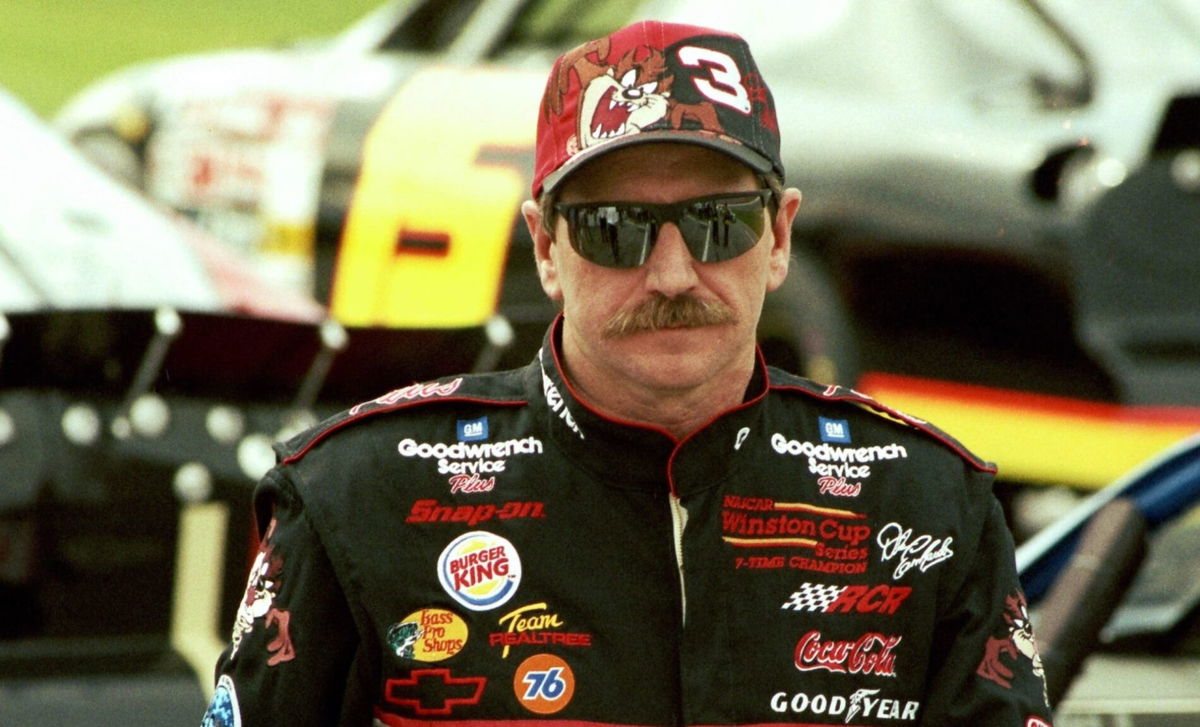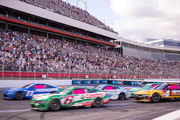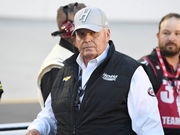
USA Today via Reuters
Mark J. Rebilas-USA TODAY Sports

USA Today via Reuters
Mark J. Rebilas-USA TODAY Sports
Deb Williams isn’t just another motorsports journalist. In fact, she’s one of the most respected chroniclers of NASCAR’s evolution. As editor of NASCAR Winston Cup Scene for over a decade and a 2026 Squier-Hall Award honoree for media excellence, Williams has interviewed legends, interpreted controversies, and spotted narratives before they became headlines. Her proximity to icons has offered a rare insight into the private sides of public figures.
Watch What’s Trending Now!
And few stories have stuck with her more than Dale Earnhardt’s behind-the-scenes transformation. Williams recalls how the man known to millions as “The Intimidator” quietly wrestled with discomfort and identity away from the track. What she observed off-camera reveals a version of Earnhardt few ever saw. She suggests that his greatest evolution happened long before his most public moments.
ADVERTISEMENT
Dale Earnhardt’s evolution
Dale Earnhardt’s legendary NASCAR career is one of the sport’s most storied tales. Known as “The Intimidator,” Earnhardt won seven NASCAR Cup Series championships—a record he shares with Richard Petty and Jimmie Johnson. Plus, he amassed 76 wins, including the elusive 1998 Daytona 500 victory that solidified his legacy. His aggressive driving style and combative demeanor made him a fan favorite and a feared competitor from the late 1970s through the early 2000s.
Yet, as Deb Williams reveals, many fans don’t realize how much Dale changed over those years. “A lot of people don’t realize how much Dale changed from the late 70s and early 80s. He wasn’t the same person,” Williams recently revealed on the Dale Jr. Download podcast. “Even dealing with him in the 1990s was entirely different than dealing with him in the early 1980s cause he was very uncomfortable, self-conscious about not having finished high school,” she further added.
.@DebWilliams72 remembers watching Dale Earnhardt evolve as a driver and an individual. 3️⃣📈
🎙️ From The @DaleJr Download pic.twitter.com/n6dRfuLfWS
— Dirty Mo Media (@DirtyMoMedia) September 4, 2025
ADVERTISEMENT
Dale Earnhardt dropped out of school in the ninth grade at age 16 to fully pursue his passion for racing. He famously said, “I wanted to race; that’s all I ever wanted to do. I didn’t care about work or school or anything, all I wanted to do was to work on race cars and then drive race cars.”
This decision was driven by an intense desire to make racing his life’s work. Even though it caused tension with his father, Ralph Earnhardt. Ralph, himself, had a hard upbringing and worried about Dale’s future without formal education. Dropping out allowed Dale to focus on building and racing cars on local dirt tracks, setting him on the path toward his legendary NASCAR career.
ADVERTISEMENT
Williams also notes how Earnhardt found comfort in his relationship with Tom Higgins, a journalist at the Charlotte Observer. Unlike interactions with the broader media, Dale was at ease with Higgins because they shared personal interests like hunting and fishing. “He was comfortable with Tom Higgins over at the Charlotte Observer, and they could do hunting and fishing and discuss that,” Williams recalls.
This evolution (from a self-conscious young man navigating the pressures of professional racing to one of NASCAR’s most iconic figures) is part of what made Dale Earnhardt unforgettable, both on and off the track. Williams’s perspective adds a nuanced, humanizing dimension to the mythic “Intimidator,” revealing the personal growth behind the legend.
Top Stories
New Charter Deal Triggers ‘Financial Frenzy’ as NASCAR Teams Set for Massive Payday

Rick Hendrick Strikes Fear in NASCAR Fans With Chevy’s New “Illegal” Car

Major Blow to Trackhouse Racing as Team Penske Steals Veteran Crew Chief Back in Unexpected Move

Martin Truex Jr’s Former Crew Chief Ends 12-Year Fight In Huge Personal Announcement

Chevy Team to Enter Kyle Larson’s Series as Michael Jordan Ends NASCAR’s Monopoly

ADVERTISEMENT
Deb Williams’ ‘Days of Thunder’ experience
Deb Williams, on the Dale Jr. Download podcast, also shared a fascinating story about witnessing a real-life “Days of Thunder” moment. It provided a glimpse into NASCAR’s Hollywood-era crossover and its genuine impact on the sport. Williams recalled the filming of the 1990 movie Days of Thunder and how it brought unprecedented glamour and attention to NASCAR.
She pinpointed the famous ice cream-eating scene, explaining that it was shot at Darlington Raceway with Benny Parsons driving and Harry Hyde serving as crew chief. Now, they were real figures from NASCAR history playing genuine roles on set. “And Days of Thunder, I can pretty much pinpoint to you where all it happened,” she said.
Williams also recounted interviewing Burt Reynolds during the filming of another racing movie, Stroker Ace. “I was given like 20 minutes with him,” Williams recalled. She described how Reynolds was polite, impressed by NASCAR’s hardworking culture, and helped create a buzz that attracted new fans to the sport. “It brought a magic to the sport,” Williams told Dale Earnhardt Jr.
ADVERTISEMENT
The blend of film and racing wasn’t just a set piece but a living history, as Williams shared insider details that only someone deeply embedded in the sport could provide. Her firsthand accounts remind fans that the Days of Thunder era was more than just a movie. Instead, it was a transformative period for NASCAR. It brought fervor, glamour, and a fresh spotlight that helped boost the sport’s popularity well into the 1990s and beyond.
Hopefully, the sequel can match that same spark, capturing not just the roar of the engines and Hollywood drama, but the authenticity of a sport and its people during a defining moment in NASCAR’s rise. Because if it can, fans old and new will be reminded why that era still echoes louder than most in racing history.
ADVERTISEMENT
ADVERTISEMENT
ADVERTISEMENT

